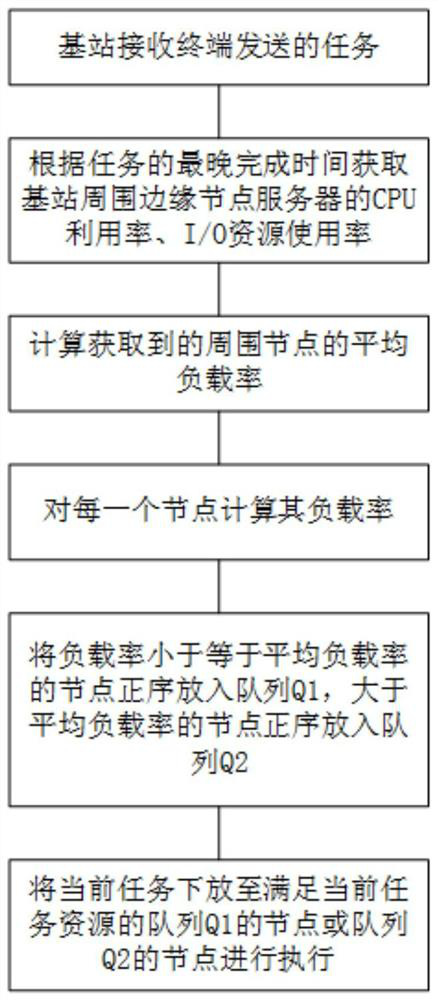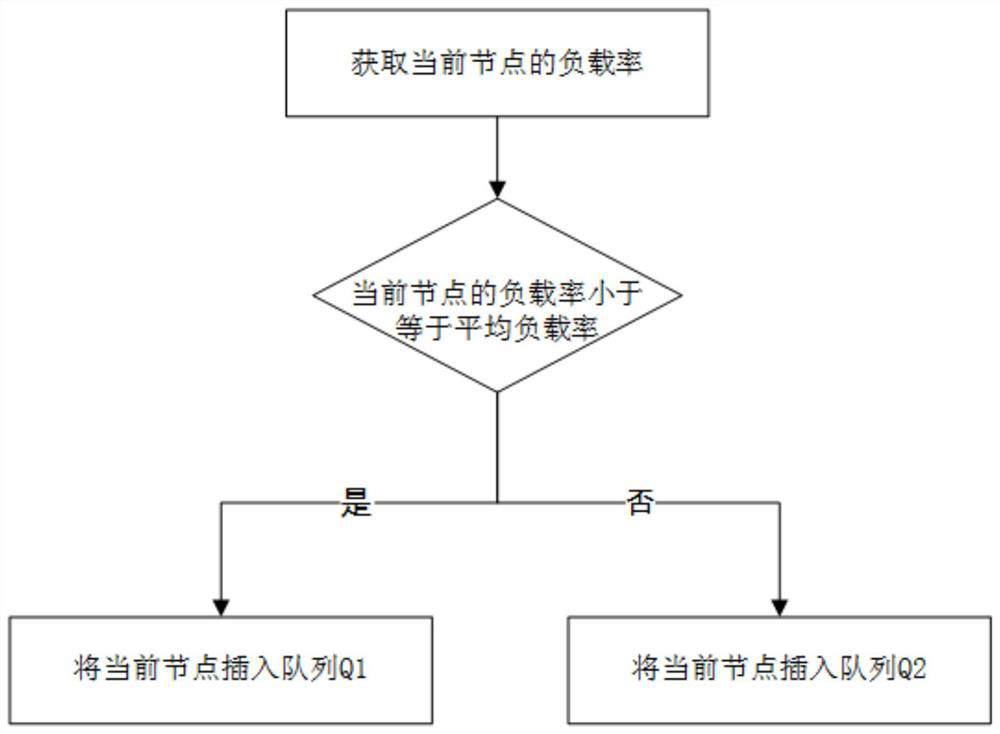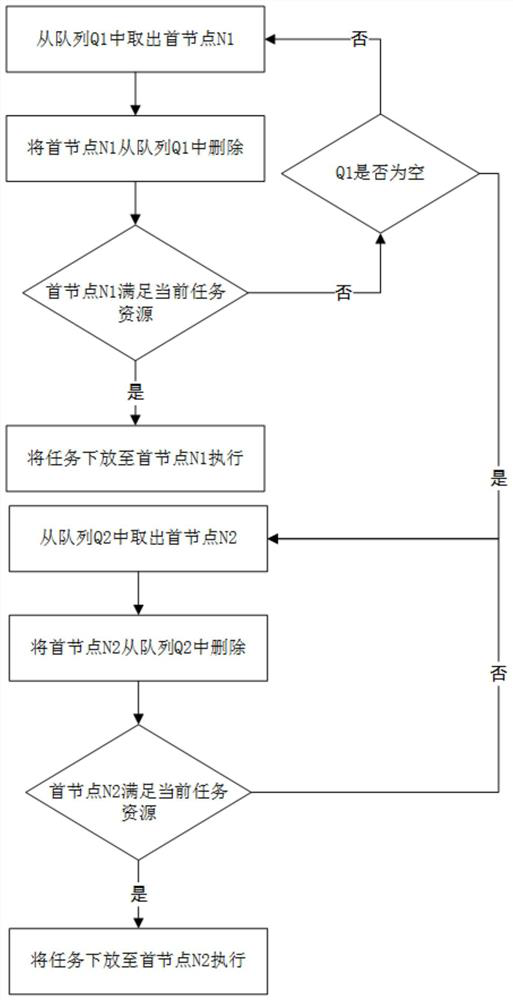Node load balancing scheduling method for edge computing environment
An edge computing and load balancing technology, applied in the field of wireless communication, can solve problems such as node idleness and node overload, and achieve the effect of reducing possibility and improving task execution efficiency
- Summary
- Abstract
- Description
- Claims
- Application Information
AI Technical Summary
Problems solved by technology
Method used
Image
Examples
Embodiment Construction
[0013] Such as figure 1 As shown, this embodiment specifically includes the following steps:
[0014] Step 1: Obtain the task type, latest completion time, required computing resources and I / O resources sent by the receiving terminal.
[0015] The task types include: calculation-intensive and I / O-intensive, for the i-th task, there is a calculation coefficient c i and I / O factor m i , when it is computationally intensive, then: c i ≥m i , when it is I / O intensive, then: m i ≥c i , and c i +m i =2.
[0016] Step 2: Calculate the propagation distance that can be reached before the task's latest completion time.
[0017] The propagation distance R=(T i -T n )sv, where: v is the propagation speed of electromagnetic waves in the optical fiber is 2.0×10 5 km / s, T i is the latest completion time of the task, T n is the current time, s(s<1) is the loss coefficient.
[0018] Step 3: Obtain n node indicators within the distance that the task can propagate in the edge comp...
PUM
 Login to View More
Login to View More Abstract
Description
Claims
Application Information
 Login to View More
Login to View More - R&D
- Intellectual Property
- Life Sciences
- Materials
- Tech Scout
- Unparalleled Data Quality
- Higher Quality Content
- 60% Fewer Hallucinations
Browse by: Latest US Patents, China's latest patents, Technical Efficacy Thesaurus, Application Domain, Technology Topic, Popular Technical Reports.
© 2025 PatSnap. All rights reserved.Legal|Privacy policy|Modern Slavery Act Transparency Statement|Sitemap|About US| Contact US: help@patsnap.com



